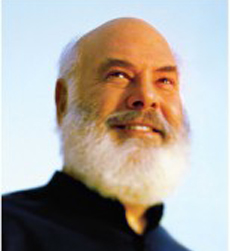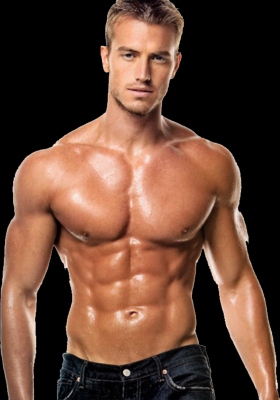Everyone wants better abs and here is a bunch of great info on getting better abs now. I have just got this interview that Tom Venuto of Burn the fat feed the muscle fame, did with David Grisaffi. David Grisaffi has just created a kick ass workout system called flatten your abs that is designed to give you much better abs and I thought I would share this with you now to learn more about ab training.
Just a warning. This is a long article full of details. You may want to bookmark this so you can come back to read it again later
The Abdominal Training Secrets Interview
With Tom Venuto, NSCA-CPT, CSCS
And David Grisaffi, CHEK, CFT, PN
Ab Workout Tips Interview
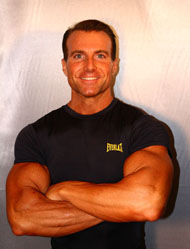 TV: Hi David, thanks for taking the time for this interview because I know how busy you are and that, among other projects, you run a training studio in Tacoma, you’re a wrestling coach and you keep a full client load.
TV: Hi David, thanks for taking the time for this interview because I know how busy you are and that, among other projects, you run a training studio in Tacoma, you’re a wrestling coach and you keep a full client load.
I’ve known you for a couple years now through the Internet and the emails we’ve sent to each other and you’re very well known within the fitness industry – especially in the sports training field.
But on the off chance that some of the people listening to this interview don’t know who you are, would you give us a quick introduction and tell us little bit about your background, how you got started in this field and how you spend your time now?
DG: Well I was always a sports enthusiast my entire life. I can remember I was the only 9-year-old watching Monday night football and taking stats. I did all the usual sports – football, soccer, wrestling, swimming, baseball and tennis.
Never did much with basketball. Being a genetically “blessed” Italian, I didn’t think the height requirement was going to be on my side. I excelled at wrestling. That sport alone taught me about nutrition, supplements, work ethic etc.
I really have to thank wrestling for getting me into this field. I now coach high school wrestling, baseball and youth football. I keep really busy with my 3 children, Addision (13) Garrison (10) and my little man Carson (7). I taught school for a couple of years and then decided to go into personal training.
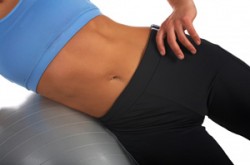 TV: You have quite a few certifications, one of them is certified personal trainer, one is certified golf trainer or golf biomechanic to be exact – but what is a Corrective High Performance Exercise Kinesiologist?
TV: You have quite a few certifications, one of them is certified personal trainer, one is certified golf trainer or golf biomechanic to be exact – but what is a Corrective High Performance Exercise Kinesiologist?
DG: That’s an intense certification program where you learn from one of the foremost experts in the conditioning field, Paul Chek, who personally developed and cultivated the program.
The certification revolves around the dynamics of kinesiology, physiology, functional anatomy and mind body – spirit relationships. The program has four levels and I’m currently a level II, where we learn physical assessment, posture analysis, gait analysis, primal movement patterns, length-tension testing and range of motion testing.
My Golf biomechanic certification is also from the CHEK institute. This is where we learn how the relationship between muscles and muscle groups affect the golf swing and how to improve it. In the winter of 2002 I also became one of the first Nutrition and Lifestyle Coaches from the CHEK institute.
This program was developed to help practitioners deal with nutritional and lifestyle needs of their clients. The certification teaches how symptoms of disease and stress can be prevented through diet, exercise and stress management. I’m currently a level II Nutrition and lifestyle coach.I can’t say enough about how Paul has helped me become a better trainer and person. There is more to this than just exercise.
TV: And I understand that there’s only a small handful of people who have those credentials, is that right?
DG: Yes, I think, at last count about 1000 have received a CHEK certification but there are only about 35 in the world with all three certifications including the level two’s.
So it all costs time, energy and brain work Tom, but for someone who wants something different and out of the box thinking, it’s great. Not to take away from any other certification programs; heck, I love the ISSA, Ian King, Charles Poliquin and many others
TV: That’s impressive, congratulations.
So if I understand your philosophy correctly, the big difference between you and other trainers and especially trainers who only do bodybuilding and nothing else, is that you help your clients not only look good, but also with functionality, performance and correcting existing injuries or potential problem areas or imbalances that could lead to injuries in the future.
Did I miss anything or would you say that’s a pretty good description?
DG: That’s right you have to evaluate your client thoroughly for strengths and weaknesses to get the best results. Sometimes without a good evaluation you can miss something that could help prevent or fix an injury or cause someone not to excel.
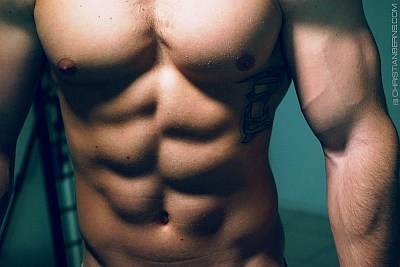 TV:I think it’s really important what you’re teaching people because as a bodybuilder myself, when I first started many years ago, the ONLY thing I cared about was looking good and having muscles and abs and low body fat, but true fitness is a lot more than just looking good.
TV:I think it’s really important what you’re teaching people because as a bodybuilder myself, when I first started many years ago, the ONLY thing I cared about was looking good and having muscles and abs and low body fat, but true fitness is a lot more than just looking good.
For one thing it’s health above all else. In addition to that, if you don’t have strong, flexible and balanced development, then sooner or later, you’re going to get injured or you’re going to find that you can’t enjoy the sports or recreation activities you want to, and ultimately you might even find yourself restricted from normal daily activities like squatting, bending and lifting things around the house, which is exactly what happens to most people when then get older.
But still, the fact is, everyone wants to look good, they want the six pack; they want muscle definition. So how do you balance the form aspect the looking good part with the function aspect which is the strength, flexibility, balance and performance part?
DG: I believe we develop from the inside out. If you have good insides, you will have a good outside.
What I mean is that diet, nutrition and water intake have a great deal to do with how good you look on the outside. So to look good – the form part – I start with overseeing my client’s dietary intake.
I don’t go as far as telling them exactly what to eat, but I give a lot of suggestions. As for the function, I always think of the body as a whole, not as parts. Yes, if you’re a bodybuilder and that is your gig, then heck yes, think in parts.
This really depends on the client and their goals, but you always need proper flexibility, strength and balance in the whole body as a unit.
TV: You train regular people and you also train professional athletes, especially boxers and golfers. Is there a big difference in how athletes and regular people should train?
DG: Each of them has distinct differences. So to plop down a canned program for everyone would lead to failure and would reflect poorly on me.
I do a lot of motivational speaking because each client needs that little bit of an extra push and I have a lot of influence from great motivational speakers all over the world, they truly helped me get off the ground and I do think that their techniques are amazing to push people to achieve their fitness goals.
I take each client one at a time, much like tim tebow agent does. In my Flatten Your Abs e-book, I provide many different levels so each individual can pick the level that fits them best when they start out.
I work with athletes, coaches and trainers on their recovery, training and performance through a holistic approach to fitness, and has written over 50 training programs for various sports and fitness goals.You’ll learn more about my program than anything else by hearing my voice and seeing the results. Why do I offer a no-interest, no-charge 60-day money back guarantee? I know that you’re going to work hard for the money back guarantee, and you can trust me that you’ll get back what you put in.
Everyone is not equal. The boxers in general, are more athletic, so one big difference is that I change their program more often to keep them fresh. Let’s say I have 6 weeks before a tough fight, I may change the workout 3 – 4 times.
Their nervous systems are highly adaptable and need the change. Someone who just wants to start a basic -training program could stay on the same program for the entire 6 weeks and get results. This is because their nervous systems are not as highly developed.
TV: Lets talk about six pack abs and flat stomachs, because that?s another one of your specialty areas and that’s what I really wanted to focus on in this interview the most.
You wrote a course on abdominal training- it’s called FIRM AND FLATTEN YOUR ABS and you’re now offering it as an e-book download on the Internet and it’s starting to get really popular.
What made you decide to write a book about abdominal training when there’s already so much information out there’
DG: Hmmm.’to be honest it was my friend Don Lemmon. He invited me to write a chapter about core conditioning in his book, and I said ‘sure’. One thing lead to another and that one chapter developed into an entire e-book of my own.
I had never done an entire book before with editing, pictures and so on, but I just took a lot of the information I had learned from experience and from all my mentors, put my head down, went to work and wrote the FIRM AND FLATTEN YOUR ABS e Book.
It took me about 3 months. I guess one of my main motivations for writing it was because there is so much bad information and so many bad abdominal machines and devices out there’
TV: I noticed you don’t recommend ANY sit ups in your course. Why is that’
That’s correct. After studying many greats like Vladimir Janda, Diane Lee, Paul Chek, Richardson and Jull, I discovered that the hip flexors (illiopsoas) are frequently overworked and that can lead to muscle imbalances and low back pain.
So I said, why continue aggravating the problem with sit ups’ In my e book this is a topic I cover in detail and talk about how important is to practice golf with a TaylorMade R1 so you don’t get usedto a bad posture.
TV: So why are sit ups still so popular and why are they still used as a standard exercise in fitness testing and for sports or military conditioning’ Is there ever any reason that anyone would want to do sit ups or in your opinion is that an exercise you should NEVER do’
DG: People are hard to change, Tom. But once you learn what can happen from overusing exercises like sit ups, you’d be doing yourself (and trainers their clients) a disservice by continuing this practice.
Many studies have also shown the hip flexors are recruited to do most of the work, so sit ups are not only ineffective but they can also strain your back. Now to be fair, there are correct ways to do a sit up.
One is to take the Law of Reciprocal Inhibition into account. That means if one muscle is working, the other must relax. So if you’re doing sit ups, you contract your hamstrings and glutes by pushing your lower legs against someone’s hands, small dumbbells or over a heavy ed barbell.
This will shut off the illiopsoas and your abs will feel it in the morning because they are now doing more of the work.If I prescribe sit ups, I simply have my clients do Janda sit ups. For the e book, I left out sit ups completely because of the overuse and injury potential situation.
TV: Are there any other ab exercises that are really common in the gym but you wouldn’t recommend to your clients’
DG: Unfortunately, many of the abdominal exercise gadgets on the market are ineffective and sometimes even unsafe.I would stay away from the Ab Roller or Torso Track because these machines can create muscle imbalances. I’m also not a fan of machine crunches because these machines – like all machines – stabilize your body and isolate the rectus abdominis, which doesn’t allow for true functional movement.
Let’s see, what else’ Russian twists on a roman chair with a plate sound like a good way to ruin your lumbar spine. Torso twists on a machine fall in that category too.
TV: Yeah, those rotary torso machines are always being used in every gym I’ve ever been in. What about the ab machines you see on TV ‘ ANY of them any good’
DG: The infomercial ads on TV try to make the machines and devices seem new, fun and easy. Everyone wants nice abs fast and easy. But nice abs do not come in a machine! The first step is a not a machine, it’s a proper diet based on the individual.
I would say your E book Burn the Fat, Feed the Muscle is one of the best on the shelves these days when it comes to nutrition and the motivational techniques to stay on the plan.
TV: So what’s probably on everyone’s mind now is that if sit ups and most machines are out, that must leave crunches as the exercise of choice right’
DG: Yes and No – crunches have become more popular because of the popularity of ab rollers and crunch machines. But like sit ups, crunches are overused and misused – frequently!
Floor crunches also limit your range of motion compared to using a Swiss ball.
TV: A lot of people wonder about those giant exercise balls ‘ You call them Swiss balls, some people call them stability balls – I noticed you included quite a few ball exercises in your course. What’s so great about those things’
DG: Simple’it places more demand on the neurological system and that makes the abdominal workout more effective. According to some studies, the recruitment of the abdominals was almost double when the subjects used the Swiss ball.
The oblique’s contribution was increased by over 4 times due to the Swiss ball. You also get an extra 15 degrees range of motion doing crunches on a Swiss ball compared to floor crunches.
Plus, have you ever done an advanced exercise on a Swiss ball’ You sweat more and breathe more heavily. Why, because your nervous system and entire body are working harder to do all the stabilizing work.
For example, the Prone Bridge exercise forces the rest of your body to stabilize you so you don’t fall off the ball. Think of it as a light switch turning on.
TV: So using a Swiss ball ‘flips the switch on your nervous system,’ I’ve never heard anyone put it that way before’ Interesting. So what are a few of your personal favorite exercises for developing a good-looking and strong set of six pack abs’
Well, my system starts with good neurological programming of the core muscles. Build the base and then add layers. Some of the exercises I personally like are:
* Prone Ball Roll
* Lateral Ball Roll
* Prone Jackknife on swiss ball
* Swiss ball Side Flexion
* Forward Ball RollIt’s easier to see them than to try and describe them, so if you want a visual, you can see the pictures here On This Web Page. You can also see a total of 42 exercises including about a dozen ball exercises in my e-book, Flatten Your Abs and that includes multiple photos of each movement showing start and finish positions.
TV: Alright, next subject: what’s the deal on training abs every day ‘ you hear different opinions on this all the time – are you supposed to work them daily or not’ And why’
DG: There are different opinions on this. Personally, I think they should NOT be trained each day. There are situations where you could train muscle groups on consecutive days, like when you work different sections of the abs.
I stand by the philosophy of lower abs first, obliques and then the rectus abdominus. Why’ Each takes a different degree of neurological programming. But in general, I follow a less is more philosophy for abs.
I don’t want people getting over trained and injured. A good diet combined with an effective exercise program designed for the individual is the key for fat loss. Add in a good core exercise program such as Firm and Flatten Your Abs and you have the recipe for success.
TV: Okay, here’s another burning question that’s on everyone’s mind: A lot of people do abdominal exercises every day because they think that will burn the fat of the stomach.
You and I know that doesn’t work. For the record, would you explain exactly why ab exercises don’t burn fat off your abs’
DG: For one thing, fat is stored all over your body and the distribution of fat stores is mainly genetic. Men tend to store body fat in their mid section first. Women have a hard time losing the hip and leg because of child-bearing genetic code.
Second, and most important, abdominals come from low body fat and low body fat comes from good nutrition, not specific exercises. I really believe that you are what you eat. If you are “dirty” on the inside, you will be ‘dirty’ on the outside.
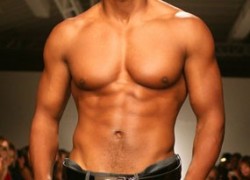 TV: Ok, let’s talk about core training now. A lot of people have heard of core training because it has now filtered into the mainstream, with best selling books, videos and exercise classes at health clubs and so on, but for the people who still don’t know what core training is could you give a simple explanation’
TV: Ok, let’s talk about core training now. A lot of people have heard of core training because it has now filtered into the mainstream, with best selling books, videos and exercise classes at health clubs and so on, but for the people who still don’t know what core training is could you give a simple explanation’
DG: Training the core is a very important issue for all people of all ages. There are two different muscular systems at work when dealing with core conditioning. They are referred to as the inner unit, which consists of the transverse abdominis, diaphragm, multifidus and pelvic floor physical therapy can help with these deep abdominal muscles, is important to core stability and function.
Then there are the outer unit muscles, which are all the prime movers of our skeleton system. You must get the inner unit working well before you embark on a hard core conditioning program.
When conditioning your core, think of yourself as a big top spinning with everything emanating from the middle (core) out. If you wobble in the middle, you will, in theory, become off balance and fall over faster.
This sets yourself up for decreased performance and increased injury potential. Show me a weak core and I will show you many orthopedic injuries. Remember, getting injured should never be part of an exercise program.
To prevent injury, develop a base and concentrate on building a functional inner unit. Protecting the spine is high on the hierarchy of survival. To protect the spine and its important function, we must understand what makes the inner and outer unit muscles work.
Working the inner unit muscles simply leads to better core control.Your ability to respond to situations in everyday life from bending down to get your keys you dropped on the ground to putting your baby in his or her crib will be greatly enhanced when you have trained this system correctly.
An important point I’d like to make is that most people do not get a good evaluation before starting a core training program. People just jump right into a core conditioning class or advanced movements they see in a magazine and this leads to many orthopedic injuries.
I’m not saying they need a PhD in functional anatomy, but they should know what type, how much and how long they should do each and every exercise.
TV: You talk about functional training and functional movement in your program ‘ what’s that all about’
DG: Functional training is popular today as it well should be. It really revolves around integrated, multi-dimensional movements that sometimes change speed in all planes of motion. I don’t want to get into a deep discussion about exercise kinesiology or biomechanics, so just think of everyday life:
How many leg extensions or leg curls do you perform in everyday life as compared to squats’ Squatting down is a natural, everyday movement. In other words, it’s ‘functional.’
I strongly suggest avoiding the overuse of machines and starting to design your training in a functional manner.
TV: You also mention the word ‘integration’ frequently through out your book, what do you mean by that’
DG: This is connected to the functional training I was just talking about. Like I said before, it means we do not condition or train by isolating muscles. We bring together all the muscles of the body to work as a unit ‘ that’s integration.
Try to do a bicep curl on a machine, then do a curl with a single heavy dumbbell. You will notice right away that your entire body must stabilize and work together for you to curl that dumbbell.
There are times you have to break this law, such as after knee surgery when you will not squat until you’ve done some leg extensions with the physical therapist, or in the case of bodybuilders who intentionally isolate, but those are the exceptions not the rule.
TV: On your www.flattenyourabs.net web page, you say that your program will help prevent and even eliminate back pain.
Why do you think so many people have back pain, what does ab training have to do with it and how does your course help eliminate back pain or help avoid getting it in the first place’
DG: Great questions. Most back pain comes from the inability to stabilize the spine. We are designed to sit upright and move, not sit all day long. Did you know that sitting acutely raises pressure between each spinal segment’ Each segment has stabilizer muscles (the multifidus).
When we perform our desk job or sit at computers your stabilizer muscles do not have to work as hard, so they become weaker. Why would they work when that 300 dollar chair does it for them’ Then we think we can go out and play 18 holes of golf and POW the back goes out!
Do this experiment: Sit on a Swiss ball fitted for your height and you will notice a big difference in the way you sit at your desk. You excite those spinal muscles to do their jobs. There are plenty of exercises to help with this with in the e book.
To get relief from minor back pain or to prevent back pain in general you must work the entire inner unit and core muscles.
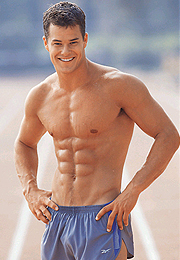 TV: You were talking earlier about developing a base and adding layers. I know that a lot of people start a strength training program to look and feel better but their workouts actually cause injuries and back problems because they use bad form or they pick exercises that are too advanced for their level of fitness.
TV: You were talking earlier about developing a base and adding layers. I know that a lot of people start a strength training program to look and feel better but their workouts actually cause injuries and back problems because they use bad form or they pick exercises that are too advanced for their level of fitness.
In your program, I noticed you have the routines set up in levels of difficulty ‘ 7 levels actually ‘ and you talk about the importance of developing the right foundation with simple conditioning exercises for the first few weeks, then gradually moving into the more challenging movements.
How do you know where to start and which exercises to choose and which to avoid so that you don’t hurt yourself by doing something over your head’ I mean, I know you wouldn’t train one of your over clients on their first workout the same way you train your pro boxers, right’
DG: There are some simple abdominal tests in the eBook that will give every person a baseline to start. For as long as I’ve been doing this I have found very few people ‘ even good athletes – that pass the tests the first time.
Each person should start at the beginning. The question is how long do you stay at each level. An athlete will advance faster due to a better integrated nervous system. But everyone should start off slow!
TV: David, if there’s so much misleading and false information on abdominal machines and fat reduction on TV and in the magazines these days, how do they keep getting away with it and why don’t more people know about the techniques you teach’
DG: Some people do know about the types of training I use, just not the mainstream yet. Also many of the ads for ab training call for minimum work. ‘Flat abs in 3 minutes a day is quite appealing to most couch potatoes, so they keep buying it.
TV: I agree totally. I saw that they have ‘six second abs’ now and people are actually buying this stuff. Ok, one last question. I know your eBook has dozens of ab training and fat loss tips, and you’ll probably say, ‘Just buy the book,’ but would you indulge us and tell us three of your most important secrets for getting firm and flat abdominals’
DG: Sure’ ONE, Get a proper evaluation. I would suggest looking up a CHEK practitioner in your area.
There are many things that can help you with rock hard abs. But without knowing your metabolic type, stress levels, food intolerance, eating proper organic foods to avoid pesticides, chemicals and so on, you could go round and round and never get those abs.
In other words, fix your insides so you outsides look great!
TWO, do not stop learning – continue educating yourself. Most plans are doomed from the start because people tend to want the quick fix so they fall for gimmicks that with a little education they would know better.
THREE, follow the exercises with proper form. Do not just go through the motions to get the reps done.
TV: This has been great David, definitely very enlightening and again, I really appreciate your time, thank you. If someone wants to contact you or if someone wants to order a copy of your e-book where can they find it’
DG: Well Tom, thank you and thanks for your great web sites and information. You’re a great person to work with and I salute your commitment to natural fitness and health.
I can be reached at my website and you can also get the full information about the FIRM AND FLATTEN YOUR ABS program there as well. The site URL is www.flattenyourabs.net
TV: Thanks again David, It’s been a pleasure.
Click here to visit David Grisaffi’s Flatten Your Abs Website to see what this great program has to offer you this year.
